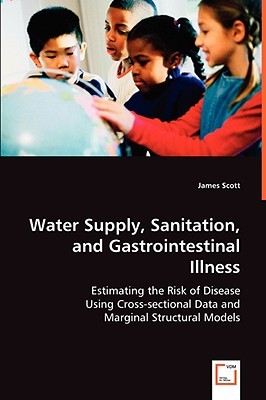
- We will send in 10–14 business days.
- Author: James Scott
- Publisher: VDM Verlag Dr. Mueller E.K.
- Year: 2008
- Pages: 116
- ISBN-10: 3836488515
- ISBN-13: 9783836488518
- Format: 15.2 x 22.9 x 0.6 cm, minkšti viršeliai
- Language: English
- SAVE -10% with code: EXTRA
Water Supply, Sanitation, and Gastrointestinal Illness (e-book) (used book) | bookbook.eu
Reviews
Description
A common way investigators estimate causal effects is though the use of randomized controlled trials (RCTs). However, in certain epidemiological contexts (e.g. examining the relationship between water, sanitation, and gastrointestinal illness), ethical concerns, the inability to adequately blind participants and investigators, and challenges in employing randomization procedures may make it difficult to conduct internally valid RCTs and may lead to biased results. Recently developed methods in biostatistics allow investigators, under certain conditions, to estimate the causal effects associated with an exposure using observational data. In this book, these methods are applied to country-wide cross-sectional data in order to estimate childhood risk of gastrointestinal illness associated with poor water and sanitation. These analyses illustrate an economical way for epidemiologists and public health professionals to use observational data, as a supplement to RCT data, to make causal inferences that may be used to inform health policy decisions.
EXTRA 10 % discount with code: EXTRA
The promotion ends in 21d.21:08:47
The discount code is valid when purchasing from 10 €. Discounts do not stack.
- Author: James Scott
- Publisher: VDM Verlag Dr. Mueller E.K.
- Year: 2008
- Pages: 116
- ISBN-10: 3836488515
- ISBN-13: 9783836488518
- Format: 15.2 x 22.9 x 0.6 cm, minkšti viršeliai
- Language: English English
A common way investigators estimate causal effects is though the use of randomized controlled trials (RCTs). However, in certain epidemiological contexts (e.g. examining the relationship between water, sanitation, and gastrointestinal illness), ethical concerns, the inability to adequately blind participants and investigators, and challenges in employing randomization procedures may make it difficult to conduct internally valid RCTs and may lead to biased results. Recently developed methods in biostatistics allow investigators, under certain conditions, to estimate the causal effects associated with an exposure using observational data. In this book, these methods are applied to country-wide cross-sectional data in order to estimate childhood risk of gastrointestinal illness associated with poor water and sanitation. These analyses illustrate an economical way for epidemiologists and public health professionals to use observational data, as a supplement to RCT data, to make causal inferences that may be used to inform health policy decisions.


Reviews